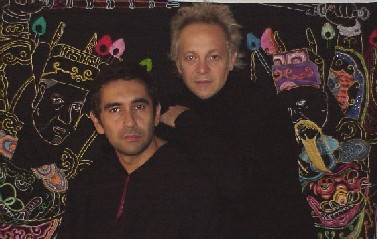miércoles, enero 28, 2015
MATERIAL INSPIRATION
Latin America’s diverse and powerful artistic production is the focus of the exhibit 'New Territories: Laboratories for Design, Craft and Art in Latin America' at the Museum of Art and Design (MAD). The exhibit surveys contemporary art projects produced by more than 75 artists, craftspersons, and collectives from the region.
Chiachio & Giannone: "Ciudad frondosa". Detalle de obra.
New Territories is the first American museum group exhibition dedicated to contemporary Latin American design, and a unique opportunity for designers to get inspired by the rich variety of materials, textures and shapes on display.
A central theme of New Territories is how contemporary design in Latin America blurs the boundaries between modern art forms and traditional craftsmanship. The exhibit is organized into six themes, each matched to a city laboratory. The theme concerning space, for example, is matched to Habana, Cuba – a place that has allowed artists to explore how individuals and communities navigate private and public spaces. With his series Architecture of Necessity, Cuban photographer Ernesto Oroza captures how people engage with the architecture that surrounds them, modifying spaces to fit their necessities.
Though connected to a city, each theme is also encountered in other areas. Peruvian artist and clothing designer Lucia Cuba also explores issues concerning the violation of personal space with the project Articulo 6, which includes garments made out cotton canvas and digitally printed with Peruvian legislature on women’s reproductive rights.
Craft, as an exhibit theme, examines designs produced between artists and artisan communities that uphold traditional forms of craftsmanship. These contemporary designs aim “to help move traditional craft skills into the future,” explains the exhibit website. Working under the premise of social change and economic development, these projects engage diverse talents to produce innovative and thought-provoking pieces. In Mexico, the collective Oax-i-fornia fuses artisanal crafts and materials with experimental design methodologies, creating new and global commercial avenues for ancestral craftsmanship.
Artists like Carla Fernández of Mexico, represent contemporary design’s potential to push the boundaries forward in a way that revives traditional craftsmanship. Fernández created the workshop Taller Flora in order to develop designs that incorporate the work of local textile weavers. These innovative garments reconfigure the “elaborate system of pleats, folds, and seams that construct a vast array of garments” traditional to Mexico, says the artist.
Square Chamula Coat, part of the Estridentistas collection (2014), was made in collaboration with Pascuala Sanchez and handwoven in wool with a waistloom then dyed with mud creating a dark and fluid cape-like garment.
Similarly, the artists behind the brand MaximaDuda collaborate with the indigenous Warao people in Caracas, Venezuela to create furniture and apparel designs that push ancient Venezuelan crafts forward. Sol de la tarde, is a triple weave tapestry made out of silk, copper and moriche (mauritia flexuosa) palm fiber found in the Orinoco River delta.
Argentine artists Leo Chiachio and Daniel Giannone have recently focused on “embroidery as a technical process for developing images,” states the exhibit website. One of the pieces on display, Ciudad frondosa(2011-2012), is a self-portraiture of the two men dressed in pre-Columbian garb (holding a pet dachshund) in an almost mythological scene surrounded by flora and fauna. The artists hand-embroidered the piece in cotton, rayon, and wool.
New Territories also makes notable mention of Latin American artists’ and designers’ commitment to environmental sustainability, putting a spotlight on objects made out of recycled materials that are also infused with environmental and political narratives. Brazilian Artist Rodrigo Almeida is concerned with an object’s construction and aesthetic dimensions. For his piece Hammock (2013), Almeida took preexisting materials like handmade cotton fabric and perforated leather to construct an object that functions as a hammock but also acts as a caftan when worn by a model.
New Territories is on display through April 6, 2015, and will inspire textile aficionados and art enthusiasts in general in more ways than one.
http://www.source4style.com/articles/material-inspiration/latin-american-art-fashion-and-craft-at-mad-museum


